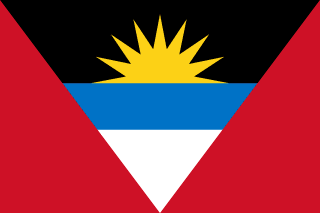Antigua and Barbuda Travel Guide: Essential Tips
Explore Antigua and Barbuda: From the Historic Nelson’s Dockyard to the Pristine Beaches of Barbuda

Top 15 Searched Questions About Antigua and Barbuda
1. What is the capital of Antigua and Barbuda?
The capital is St. John’s, located on Antigua, known for its colorful markets and historic cathedral.
2. Do I need a visa to visit Antigua and Barbuda?
Many nationalities, including US, UK, and EU citizens, can visit visa-free for up to 6 months. Check requirements in our Documents tab.
3. What currency does Antigua and Barbuda use?
The Eastern Caribbean Dollar (XCD) is the official currency, but US dollars are widely accepted. More in our Currency tab.
4. Is Antigua and Barbuda safe for tourists?
Yes, it’s generally safe, but petty theft can occur in tourist areas like St. John’s. More in our Safety tab.
5. What language is spoken in Antigua and Barbuda?
English is the official language, though locals often use Antiguan Creole in casual settings.
6. What is Antigua and Barbuda known for?
It’s famous for its 365 beaches (one for each day of the year), historic sites like Nelson’s Dockyard, and events like Carnival. More in our Top Attractions tab.
7. What’s the best time to visit Antigua and Barbuda?
December to April is ideal, with dry weather and temperatures around 25-30°C. The wet season (June-November) may bring hurricanes.
8. Is Antigua and Barbuda expensive to visit?
It can be pricey—budget travelers might spend $100-150 per day. Resorts are costly, but local eateries offer affordable meals.
9. Can I drink tap water in Antigua and Barbuda?
Tap water is generally safe in most areas, but bottled water is recommended for sensitive stomachs, especially in remote parts of Barbuda.
10. What are some must-visit places in Antigua and Barbuda?
Highlights include Nelson’s Dockyard, Dickenson Bay, and Barbuda’s Pink Sand Beach. More in our Top Attractions tab.
11. What’s the climate like in Antigua and Barbuda?
It’s tropical, with average temperatures of 27°C year-round. The dry season is December to April, while June to November is wetter and hurricane-prone.
12. Are there festivals in Antigua and Barbuda?
Yes, Antigua’s Carnival in late July/early August features parades and music. Sailing Week in April attracts global yacht enthusiasts.
13. What souvenirs should I buy in Antigua and Barbuda?
Popular souvenirs include local rum, handmade pottery, and batik fabrics from markets in St. John’s.
14. How do I get around in Antigua and Barbuda?
Taxis are common ($20-30 for short trips). Car rentals cost $40-60 per day. Ferries connect Antigua and Barbuda ($50 round trip).
15. What traditional foods should I try in Antigua and Barbuda?
Try ducana, saltfish, and pepperpot. Wash it down with a Wadadli beer. More in our Local Cuisine tab.
About Antigua and Barbuda
Antigua and Barbuda, a twin-island nation in the Eastern Caribbean, spans 442 square kilometers, with Antigua being the larger island and Barbuda its quieter sibling. St. John’s, the capital on Antigua, is a vibrant hub with its bustling harbor, colorful markets, and the historic St. John’s Cathedral. The nation’s population is around 100,000 (2023 estimate), predominantly of African descent, with English as the official language and Antiguan Creole widely spoken. Gaining independence from Britain in 1981, Antigua and Barbuda remains part of the Commonwealth, with King Charles III as its monarch. Known as the "Land of 365 Beaches," the islands boast a beach for every day of the year, alongside historic landmarks like Nelson’s Dockyard, a UNESCO World Heritage Site. The economy thrives on tourism, offshore banking, and agriculture, with sugar cane and cotton as traditional exports. The tropical climate averages 27°C year-round, with the dry season (December-April) being the peak tourist period, while the wet season (June-November) brings occasional hurricanes. Budget travelers can expect to spend $100-150 per day, with local meals like pepperpot costing $5-10 at roadside stalls. Taxis are the main mode of transport ($20-30 for short trips), though car rentals ($40-60 per day) offer flexibility. Ferries connect the islands ($50 round trip). Cultural events like Antigua’s Carnival in late July/early August feature vibrant parades, calypso music, and street parties, while Sailing Week in April draws international sailors. Antigua’s history as a British naval base is evident in sites like Nelson’s Dockyard, while Barbuda offers serenity with its Pink Sand Beach and frigate bird sanctuary. The islands’ rich Afro-Caribbean culture shines through in their food, music, and laid-back vibe, making Antigua and Barbuda a perfect blend of relaxation, history, and natural beauty for travelers seeking a Caribbean escape.
Visa & Passport for Antigua and Barbuda: Entry Requirements for Travelers
- Passport Requirements: Your passport must be valid for at least 6 months beyond your departure date.
- Visa Requirements: US, UK, EU, and many other nationalities can enter visa-free for up to 6 months. Check with the Antigua and Barbuda Immigration Department.
- Other Requirements: A return or onward ticket and proof of accommodation may be required upon entry.
Driving in Antigua and Barbuda: Road Rules & Tips for Tourists
- Driver’s License: A valid foreign license is accepted, but you’ll need a local driving permit ($20 USD) available at rental agencies or police stations.
- Traffic Rules: Drive on the left. Speed limits are typically 20 mph in towns and 40 mph on highways. Seat belts are mandatory.
- Road Conditions: Roads in Antigua are narrow and can be potholed, especially in rural areas. Barbuda’s roads are mostly unpaved.
- Car Rental: Available in St. John’s for $40-60 per day. Book in advance during peak season (December-April).
- Parking: Free parking is common, but spaces in St. John’s can be limited during market days (Fridays and Saturdays).
- Emergency Number: Dial 911 or 999 for emergencies, including police, ambulance, or fire services.
Currency in Antigua and Barbuda: Using the Eastern Caribbean Dollar for Your Trip
- Eastern Caribbean Dollar (XCD): The official currency, pegged to the US dollar at 2.7 XCD to 1 USD. US dollars are widely accepted.
- Currency Exchange: Banks and ATMs in St. John’s offer the best rates. Small vendors may give change in XCD if paying in USD.
- Payment Methods: Cards are accepted at resorts and larger businesses, but cash is preferred at local markets and small eateries.
- Costs: A local meal costs $5-10 USD, while a mid-range hotel in Antigua may charge $100-200 USD per night.
Legal Guide to Antigua and Barbuda: Laws Travelers Should Know
- Local Laws: Public consumption of alcohol is restricted outside licensed venues. Drug possession, including marijuana, is illegal and heavily penalized.
- Cultural Sensitivities: Respect local customs, especially during festivals like Carnival. More in the Culture & Etiquette tab.
- Photography Restrictions: Avoid photographing government buildings or military sites without permission.
- Public Behavior: Public nudity, including topless sunbathing, is illegal and frowned upon. Swearing in public can lead to fines.
- Customs Rules: You can bring up to 200 cigarettes and 1 liter of alcohol duty-free. Declare cash over $10,000 USD upon entry.
- Emergency Contact: Dial 911 or 999 for emergencies. For non-urgent issues, contact the Royal Police Force of Antigua and Barbuda at 268-462-0125.
Travel Safety in Antigua and Barbuda: Staying Safe on Your Trip
- Crime: Generally safe, but petty theft occurs in tourist areas like St. John’s. Avoid flashing valuables and secure belongings on beaches.
- Road Safety: Narrow roads and aggressive driving can be hazards. Avoid driving at night in rural areas due to poor lighting.
- Health Risks: No major health risks. Mosquito-borne diseases like dengue are a concern—use repellent, especially in the wet season.
- Natural Hazards: Hurricanes can occur from June to November. Monitor weather updates during this period.
- Scams: Be cautious of unofficial tour guides overcharging. Book through reputable agencies.
- Medical Facilities: The Mount St. John’s Medical Centre in St. John’s is the main hospital. Travel insurance is recommended for non-residents.
- Emergency Contacts: Dial 911 or 999 for emergencies. The US Embassy in Barbados, which serves Antigua, can be reached at 246-227-4000.
Culture & Etiquette in Antigua and Barbuda: What to Know
- Greetings: A friendly “Good morning” or “Good afternoon” is customary, even with strangers. Handshakes are common for formal introductions.
- Dining Customs: Tipping 10-15% is expected at restaurants. Locals often eat with their hands for traditional dishes like ducana.
- Community Respect: Antiguans value community—be polite and avoid loud behavior in residential areas.
- Festivals: Carnival in late July/early August features vibrant parades and calypso music. Sailing Week in April is a global yachting event.
- Language Tips: English is spoken, but locals may use Antiguan Creole phrases like “Wadadli” (the indigenous name for Antigua).
- Beach Etiquette: Keep beaches clean and avoid walking through local fishing setups. Dress modestly when not on the beach.
Local Cuisine in Antigua and Barbuda: Must-Try Dishes & Drinks
- Ducana and Saltfish: A sweet dumpling made from grated yam and coconut, paired with salted codfish.
- Pepperpot: A hearty stew with vegetables, meat, and spices, often served with fungi (a cornmeal side).
- Conch Fritters: Deep-fried balls of conch meat, seasoned with herbs and spices.
- Black Pineapple: A sweet, local variety of pineapple, often enjoyed fresh or in desserts.
- Wadadli Beer: A light, locally brewed lager, perfect for a beach day.
- Where to Eat: In St. John’s, Papa Zouk offers authentic Antiguan dishes like pepperpot in a lively atmosphere. On Barbuda, Uncle Roddy’s Beach Bar serves fresh seafood with ocean views. Both are highlighted in our Top Attractions tab.
Top Attractions in Antigua and Barbuda: Must-Visit Places
- Nelson’s Dockyard (Antigua): A UNESCO World Heritage Site and restored 18th-century naval base. Search for tours on Tiqets.
- Dickenson Bay (Antigua): A lively beach with white sand, water sports, and beach bars. Search for activities on Tiqets.
- Pink Sand Beach (Barbuda): A stunning beach with blush-pink sands and clear waters. Search for tours on Tiqets.
- Frigate Bird Sanctuary (Barbuda): Home to one of the largest frigate bird colonies in the world. Search for tours on Tiqets.
- Devil’s Bridge (Antigua): A natural limestone arch where waves crash dramatically against the rocks. Search for activities on Tiqets.
- Shirley Heights Lookout (Antigua): Offers panoramic views of English Harbour, best visited during the Sunday evening party. Search for events on Tiqets.
- Dining Spots: In St. John’s, Papa Zouk is a local favorite for Antiguan cuisine like pepperpot, with live music adding to the vibe. On Barbuda, Uncle Roddy’s Beach Bar is a must for fresh lobster and conch fritters, right on the beach with stunning sunset views.
Flights to Antigua and Barbuda: Travel Options
V.C. Bird International Airport (ANU) in Antigua is the main entry point, with flights from cities like Miami, New York, and London. Taxis from the airport to St. John’s cost around $15 USD and take 15 minutes.
Create Your Packing List for Antigua and Barbuda
Travel Tips for Antigua and Barbuda
- Connectivity: Local SIM cards from Digicel or Flow cost around $10 USD with 2 GB of data. Wi-Fi is available at most resorts.
- Health Prep: No vaccinations are required, but pack sunscreen (SPF 30+) and insect repellent for the tropical climate.
- Weather Prep: Lightweight clothing is ideal, but bring a light jacket for cooler evenings or rain during the wet season.
- Beach Safety: Some beaches have strong currents—swim where lifeguards are present, especially at Dickenson Bay.
- Hurricane Season: If traveling between June and November, monitor weather updates and have a flexible itinerary.
